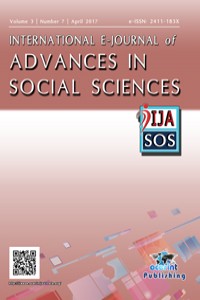Abstract
In this paper, we provide an analysis of the
cultural policy of Spain in its recent history. Starting with a historical and
cultural panorama of Spain in the 20th century, we investigate whether Spain
reached a conceptual understanding of the power of its culture and whether it
subsequently established and implemented a cultural strategy in a truly
eventful period of its history. At the beginning of the 20th century, with its
wounds still open from the defeat suffered by the United States in 1898, Spain
was considered a "dead country". Herein, we discuss how historical
circumstances influenced the cultural setting in Spain, how Spain reacted and
to which extent the investment in culture helped in the “renaissance” of Spain.
We address the role of educational and scientific progress and examine whether
cultural development can mobilize people and set the foundations of a new
collective conscience. We also discuss whether preservation and exploitation of
cultural elements introduces a barrier to progress and modernization.
As part of the
development of a cultural strategy, Spain used the American reference as an
alternative space for cultural and economic confirmation and expansion. The
American dimension was perceived as an incentive for modernization and reform,
which, in this case, was a bet for the future without abandoning the past; it
was also considered as a place where common elements in the reform process
could be found, a place of global, international value which could further
support the European character Spain planned to acquire. To obtain this
objective, Spain had to revive common links and re-establish a common Spanish
consciousness. America formed an external compensating factor, which, properly
exploited, could help Spain regain its role on the international stage. To this
aim, religion and language were important, unifying factors. In this context,
we present our analysis on how Spain efficiently managed this important legacy
and how it successfully exploited its cultural assets in order to establish a
cultural strategy.
Keywords
References
- Fernández L. S., Pérez D. R., Comellas J. L. y Andrés-Gallego J. (1991). Historia General de España y América, La época de Franco, Ed. Rialp, Madrid. Gómez J. T. (1993). El régimen de Franco, 1936-1975: política y relaciones exteriores, UNED, Madrid. Gómez-Escalonilla, L. D. (1992). Imperio de papel. Acción cultural y política exterior durante el primer franquismo, CSIC, Madrid. Gómez-Escalonilla, L. D. (1995). Las relaciones culturales de España en tiempo de crisis: de la II República a la Guerra Mundial, UNED, Madrid. Gómez-Escalonilla, L. D. (2002). América como estímulo: regeneración nacional y tierra de oportunidades, CSIC, Madrid. Gómez-Escalonilla, L. D. (2012). La acción cultural exterior de España: trayectoria reciente y retos pendientes, Ariel-Real Instituto Elcano, Barcelona. Herrera de la Muela, I. (2007). La contribución del Instituto Cervantes a la promoción exterior de la cultura española e hispanoamericana: ¿actor o agente?, Instituto Cervantes, Madrid. Jevenois Acillona, P. (1996). Los Centros Culturales y Educativos en el exterior, Ministerio de Asuntos Exteriores, Madrid. Pérez Garzón J. S. (2000). La creación de la historia de España, Crítica, Barcelona Redondo G. (1999).Política, cultura y sociedad en la España de Franco, Ed. Universidad de Navarra, Navarra. Rodríguez A. N. (1993). Hispanoamericanismo, regeneración y defensa del prestigio nacional (1898-1931), Aieti/Síntesis/OEI, Madrid. Rodríguez A. N. (2001). Orígenes y despliegue de la política cultural, L’ Harmattan, París.
Abstract
References
- Fernández L. S., Pérez D. R., Comellas J. L. y Andrés-Gallego J. (1991). Historia General de España y América, La época de Franco, Ed. Rialp, Madrid. Gómez J. T. (1993). El régimen de Franco, 1936-1975: política y relaciones exteriores, UNED, Madrid. Gómez-Escalonilla, L. D. (1992). Imperio de papel. Acción cultural y política exterior durante el primer franquismo, CSIC, Madrid. Gómez-Escalonilla, L. D. (1995). Las relaciones culturales de España en tiempo de crisis: de la II República a la Guerra Mundial, UNED, Madrid. Gómez-Escalonilla, L. D. (2002). América como estímulo: regeneración nacional y tierra de oportunidades, CSIC, Madrid. Gómez-Escalonilla, L. D. (2012). La acción cultural exterior de España: trayectoria reciente y retos pendientes, Ariel-Real Instituto Elcano, Barcelona. Herrera de la Muela, I. (2007). La contribución del Instituto Cervantes a la promoción exterior de la cultura española e hispanoamericana: ¿actor o agente?, Instituto Cervantes, Madrid. Jevenois Acillona, P. (1996). Los Centros Culturales y Educativos en el exterior, Ministerio de Asuntos Exteriores, Madrid. Pérez Garzón J. S. (2000). La creación de la historia de España, Crítica, Barcelona Redondo G. (1999).Política, cultura y sociedad en la España de Franco, Ed. Universidad de Navarra, Navarra. Rodríguez A. N. (1993). Hispanoamericanismo, regeneración y defensa del prestigio nacional (1898-1931), Aieti/Síntesis/OEI, Madrid. Rodríguez A. N. (2001). Orígenes y despliegue de la política cultural, L’ Harmattan, París.
Details
| Journal Section | Articles |
|---|---|
| Authors | |
| Publication Date | April 30, 2017 |
| Submission Date | April 28, 2017 |
| Published in Issue | Year 2017Volume: 3 Issue: 7 |
Contact: ijasosjournal@hotmail.com
The IJASOS Journal's site and its metadata are licensed under CC BY
Published and Sponsored by OCERINT International © 2015- 2024


